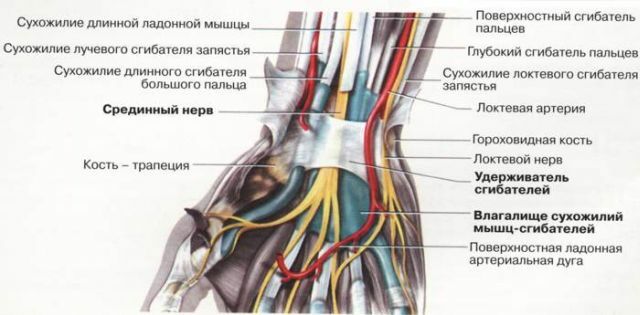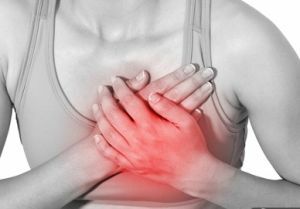 Thoracalgia( ICD code 10 - M54.6.) - peripheral nerve disease , accompanied by severe pain.
Thoracalgia( ICD code 10 - M54.6.) - peripheral nerve disease , accompanied by severe pain.
Thoracalgia, as a pain in the sternum, is sometimes associated with the manifestation of other disorders: a heart attack, angina pectoris, etc.
Most often, the disease indicates problems with the spine.
Article Contents
- Causes disease
- types and clinical variants torakalgii
- Vertebrogenic torakalgiya
- Nature pain
- symptoms and syndromes, characteristic pathology
- Diagnostic techniques
- Treatments
- traditional medicine
- Preventive measures
Causes disease
Causes of pain:
- osteochondrosis;
- scoliosis and kyphoscoliosis;
- lesions of the thoracic spine, some disorders of the nervous system;
- hernia or protrusion of vertebral discs of the sternum of the vertebral column;
- spinal congestion;
- muscle spasm;
- stress, decreased immunity, herpes, etc.
When exposed to such processes and abnormalities, the nerve is squashed by nearby tissues.
The affected nerve does not perform its standard functions, which is why it may cause pain in the affected part.
Chest pain at a young age is often associated with a violation of Sheyermann-May, due to which there is increased kyphosis and deformity of the vertebrae. The cause of pain in the lower part of the sternum of the elderly can be osteoporosis with the presence of a compressive vertebral fracture.
Tenderness pains in the sternum can appear due to herpes zoster, nerve damage in diabetes, vasculitis.
The risk of thoracalgia increases low motor activity, bad habits, weight lifting, prolonged monotonous work, etc.
Species and clinical variants of thoracology
Types of violations:
- vertebrogenic and vertebral thoracalgia;
- during pregnancy;
- is psychogenic;
- chronic;
- musculoskeletal;
- pain localized to the left and right.
Vertebrogenic thoracalgia

Why it hurts in the chest or vertebrogenic thoracalgia
Thoracalgia is a pain in the chest that occurs when the intercostal nerves are compressed or irritated or when they are injured by viruses and. ..
There are 4 clinical variants of the disorder:
- of the Lower Neck - pain in the upper part of the sternum, in the clavicular region with spreading to the neck, left shoulder, arms.
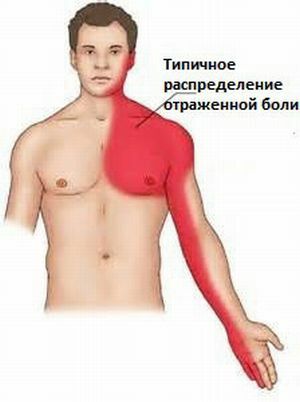
- Upper thoracic department - prolonged aching pain centered behind the breastbone. Can be combined with pain between the shoulder blades.
- Spade-rib thoracology - various pains: aching or stitching, short-term or prolonged. Often the pain is concentrated between the scapulae, on the left side, on the side. Pain can be felt by inhaling and exhaling.
- Pain in the anterior thoracic wall of the - the pain is long, aching, in the area between the anterior axillary and peri-chest lines, increases with movement.
Nature of pain syndrome
In osteochondrosis, the occurrence of pain occurs in this way. At the initial stage, there are violations of the structure of the vertebral disk, the core tissues lose moisture and the disk, respectively, is deprived of elasticity.
The next stage is the protrusion of the disk.
Part of the disc protruding into the canal cavity, presses on the posterior longitudinal vertebral ligament innervated by the spinal nerves. The irritation of the nerves of this ligament causes pain in the back, which is called thoracalgia.
In the future, the integrity of the capsule of the disk is violated and the destroyed nucleus enters the vertebral canal - an intervertebral hernia appears.
In general, hernial protrusion is observed in the lateral parts of the disc, where the nerve roots pass. At this stage irritation of these nerves is added, which also causes pain.
 Extensor contracture of the knee joint can be caused by a knee injury. How to minimize the risks of its occurrence, find out in our article.
Extensor contracture of the knee joint can be caused by a knee injury. How to minimize the risks of its occurrence, find out in our article.
Pain syndrome vertebrogenic bilateral lumboscialgia provoke problems in the lumbosacral department. What you should know about in this case.
Symptoms and syndromes typical of the pathology
The main manifestations are:
- Constant, piercing, paroxysmal pain, concentrated in the right or left half of the sternum .It spreads in the spaces between the ribs, is strengthened by inhaling, coughing, and movements of the trunk.
- Pain, accompanied by numbness of , burning along the nerve or its branches. That is why the violation sometimes manifests itself in pain in the back, under the scapula, in the lower back.
- Pain in the sternum , provoked by excessive muscle tension. Often it is the extensors of the back, the muscles of the shoulder and shoulder blades. Muscle pain is peculiar to build up when exposed to stretching on the affected muscle.
- The manifestation of the chronic form of is expressed in the weak but constant effect of the symptoms and the development of the disease. The chronic condition is tolerable for the patient. Pain can appear for 3 months, after which it subsides for an indefinite period. After some time they will return, but with more force and consequences. To protect yourself from the chronic form of the disorder, you need to seek help and begin treatment promptly.
Thoracalgia syndromes:
- Radicular or pain syndrome .
- Visceral syndrome .Lesions of the thoracic spine are always combined with a violation of the innervation of the chest, which can cause problems in the work of these organs.
- Radicular syndrome with vegetative conditions .Often it is instability of pressure, anxiety, a feeling of lack of air, a feeling of a lump in the throat when swallowing.
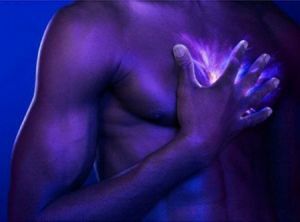 Sometimes pains of this nature are confused with heart problems. Pain with heart disease of a permanent nature, and the attack is removed by taking nitroglycerin.
Sometimes pains of this nature are confused with heart problems. Pain with heart disease of a permanent nature, and the attack is removed by taking nitroglycerin.
If the pain does not disappear when taking the drug, it means that it is a manifestation of osteochondrosis.
Intercostal neuralgia, in contrast to thoracology, is characterized by superficial pain along the intervals between the ribs.
Diagnostic procedures
For pain in the sternum, it is necessary to exclude a different origin of pain associated with the need for medical care. If there are suspicions of an acute illness, the patient must be urgently placed in a hospital.
The research methods used to diagnose :
- X-ray;
- MRI;
- scintigraphy;
- densitometry;
- ENMG;
- laboratory studies.
Treatment procedures
If the symptoms indicate that the patient has thoracology, it is better to start treatment immediately.
For different variants of the syndrome its own treatment is used:
- With , the shoulder-rib lesion affects the rib-transverse joints, restores the mobility of the ribs and muscles that lift the scapula.
- With , the anterior thoracic syndrome performs post-isometric exercises for pectoral muscles and massage.
- With , violations of the inferior part of the are restored to the work of its motor elements and muscles.
- With breaches of the upper part of the , the breast focuses on restoring the functioning of the thoracic disc segments by means of post-isometric relaxation techniques. As a rule, the therapeutic effect is achieved after 2-4 sessions.
Treatment of drug deviation is ineffective without physiotherapy, massage and therapeutic gymnastics.
The doctor-neurologist prescribes such preparations:
- anti-inflammatory: diclofenac, tselebrex;
- for violations of muscle tone - sirdalud, midokalm;
- neuroprotectors: B vitamins
Physiotherapy:
- cryotherapy;
- hivamat;
- laser treatment;
- electrophoresis.
All these measures improve microcirculation of tissues, their restoration, reduce inflammation.
Massage is performed only after physiotherapy. When massage the doctor acts on the scapular muscles and the paravertebral zone of the thoracic part. 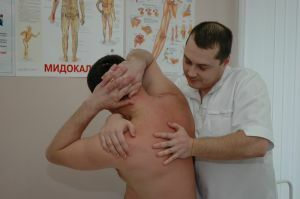
If you have acute pain, massage should be stopped for a while.
Moderate physical activity is the main way to treat chest pain. LFK gives an opportunity to restore the biomechanics of movements, which allows to stop the development of pathological processes.
Traditional medicine
Traditional methods of treatment:
- heating with mustard plasters, hot water, salt, sand;
- rubbing with tinctures on alcohol;
- herbal teas with chamomile, melissa.
Folk remedies temporarily neutralize the pain, but do not cure the disease completely.
Gentle manual therapy is used to mobilize motor segments, remove muscle blocks, eliminate subluxation of the facet joints, allowing to reduce pain, restore the volume of movements in the spine.
Acupuncture allows you to restore the conductivity of nerve fibers and relieve pain.
Preventative measures
For prophylaxis, it is necessary to take care of the spine, handle the weights carefully, observe the temperature regime, rest on comfortable furniture, a mattress, full nutrition.
It is very important to go in for sports , which will keep your muscles toned, "develop" the spine, if you have injuries or other disorders of the spine - contact the doctor.
Please note that infections and other diseases can also trigger pain.
The combination treatment allows to achieve a positive result in a rather short time, to slow the development of the violation for a long time.
Thoracalgia is a complex problem and for the diagnosis and treatment requires the efforts of a large number of literate professionals.

